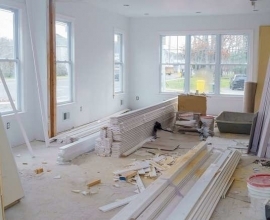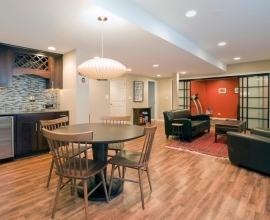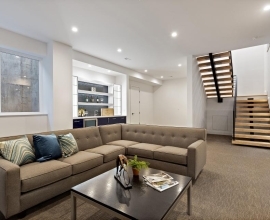Home Foundations – Cost Differences For Building Foundations
A good foundation for your home is critical. A foundation requires good design and proper materials. Most importantly, it needs to be built right! While some errors in the foundation can be rectified later on during framing, the extra time and hassle is just not worth it.
There are several options to consider when building your home. Actually, the options are best considered during your home’s design, well before you begin building.
Major Types of Foundations
Let’s look at a few of the most popular foundation types and materials. I’ll include some pros and cons, then we’ll discuss the cost differences to help you decide the best approach for you.
1) Slab on Grade:
Slab on grade means concrete at ground level. This is very common in the West. These can be among the least expensive approaches to building a foundation but not as “repair friendly” if buried plumbing needs fixing. Slab foundations can also crack slightly which usually only poses a minor problem.
With a slab on grade, not only does the cement support your home directly, it acts as your subfloor as well. This means you won’t need foundational posts and beams for support, nor will you need joists or plywood for the floor.
2) Pier, Post, and Beam:
This type is often referred to as a crawl-space basement. The foundation is raised up above grade. There are “stem walls” of block or concrete around the perimeter of the house/foundation and cement piers support posts, and beams to hold up the floor joists and floor decking.
This gives you room to access plumbing and electrical for repairs and remodels. It doesn’t use nearly as much cement. The cost of this foundation, when you include the extra costs for lumber, is often similar to the slab on grade foundation.
3) Full Basement:
A full basement is probably the most expensive to build. Usually consisting of poured cement and blocks for the 8 to 9 foot stem walls with various posts and beams. Also, a full basement usually requires a lot of expensive excavation.
The floor of the basement is usually a concrete slab. Quite a bit of cement goes into this type foundation. However, the extra space that the basement provides can be converted to fairly inexpensive additional square footage for living space in the home. Modifications for emergency exits may be required, however.
4) Partial Basement:
This is basically a combination approach utilizing both #2 and #3. This is an advantage when a basement is needed for storage and safety during storms. This would likely be the second most expensive foundation.
A partial basement requires less excavation work than a full basement, which saves money.
5) Walk-out Basement:
The walk-out (also called Daylight Basement) works well when the house is built on a hill or sloping lot. Usually, three sides of the home’s basement are under or partially under ground and one side is completely open to the lower level of the property.
This type can be among the least costly to build. And a big advantage is that it can provide extra livable square footage for the home without special permits and modifications for emergency egress. Excavation should be minimal but you’ll need a sloping lot to make this work.
Assessing Your Needs
As you analyze the differences, keep in mind the options your lot offers. For instance, the type soil, the slope, the excavation costs all have to be considered before you make up your mind.
Use a home building coach to help you make the best decision for your situation and needs.
Eric Lachance is the heart of Royal Renovations Ottawa. Eric has more than 25 years of experience in the contracting and remodeling/renovation industry. All of his projects are completed professionally, meticulously and with great pride which is demonstrated by his superior craftsmanship.
Article Source:https://bit.ly/3P0AtUJ







